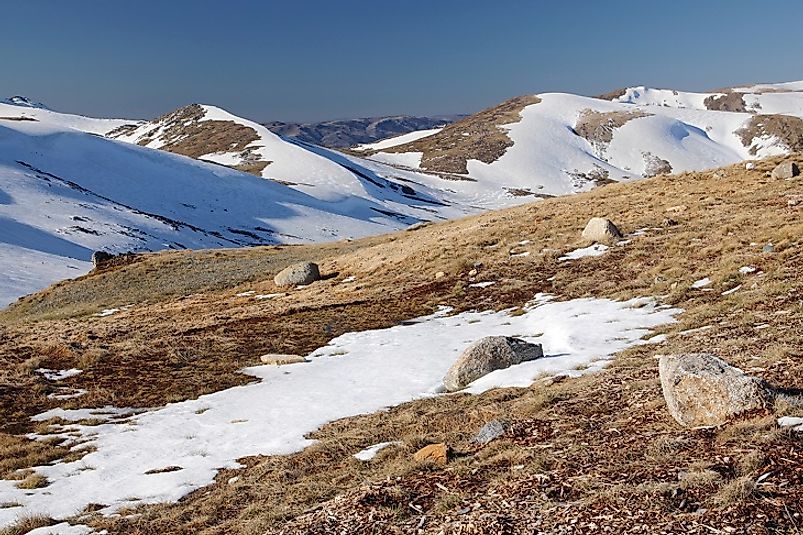Where Does Mount Townsend Rise?

5. Description
Mount Townsend is the second highest mountain in mainland Australia, rising to a height of 7,247 feet (2,209 meters) in the Main Range of the Great Dividing Range. The mountain is part of the Snowy Mountains of New South Wales, Australia. The mountain is only 63 feet shorter than the tallest peak of Australia, Mount Kosciuszko, which is itself 7,310 feet (2,228 meters) high. Both mountains lie under the protection of the Kosciuszko National Park, which was established on October 1, 1967. According to the Bass list of classification, Mount Townsend represents the Australian continent among the Seven Second Summits of the world, and features in the seventh position on that same list.
4. Historical Role
The Snowy Mountains Region, which hosts Mount Townsend, is thought to have been inhabited by human populations as far back as 20,000 years ago. The European exploration of these mountains began in 1835. Since then, several climbers have successfully climbed both Mount Kosciuszko and Mount Townsend. Despite being lower in height than Mount Kosciuszko, Mount Townsend has a craggier summit, and is therefore more difficult to access. A tradition prevails among the climbers of the mountain where anyone who makes an attempt to reach the summit of Mount Townsend carries a piece of rock from the base of the mountain and places it at the summit in order to make Mount Townsend appear taller than the relatively round peak of Mount Kosciuszko.
3. Modern Significance
The Kosciuszko National Park encompassing Mount Townsend is a popular tourist destination in the Snowy Mountains area. The scenic beauty of the park and its mountains draw thousands of annual visitors to this place. Many climbers also attempt to ascend Mount Townsend with the aim to reach one of the summits of the Seven Second Summits of the world. The mountain and the park also host a rare diversity of Australian flora and fauna that is native to the region.
2. Habitat
Mount Townsend is a part of the Kosciuszko National Park, with is unique Alpine Australian flora and fauna. The lower altitudes of the park are covered by Alpine woodlands and sclerophyll and montane forests, and these are comprised by such trees as Snow gums, Alpine ash, and Mountain gums. Vegetation gradually thins out with increasing altitudes, and coniferous forests, alongside Alpine meadows, bogs, and heaths, are more common in the higher reaches of the mountain. The Kosciuszko National Park is home to a number of rare and unique native species. The Mountain Pygmy possum (a critically endangered nocturnal marsupial), the Corroboree frog (a critically endangered poisonous ground-dwelling frog) and the Dusky antechinus (a small marsupial carnivore) are each found inhabiting the park. Feral wild horses are also a common occurrence in the Kosciuszko National Park.
1. Threats and Disputes
Climate change poses the greatest risk to the Alpine biota of Mount Townsend and its surrounding Kosciuszko National Park. Scientists predict that, within a period of 70 years, anywhere from 15 to 40 plant species of these Alpine habitats could become extinct due to rising temperatures. This would disturb the entire ecosystem in the park, leading to a loss of Alpine fauna in the higher reaches of the mountains, the increased manifestation of invasive weed and pest species, an increase in the incidence of wildfires, and alterations of hydrology patterns of the surrounding environment. Besides climate change, a rise in tourist footfall, deforestation of land, and the construction of hydroelectric dams on the water bodies of the park also threaten the wild flora and fauna. These could lead to the elimination of several "critically endangered" species in these habitats, including the likes of the Mountain Pygmy possum and the Corroboree frog.







